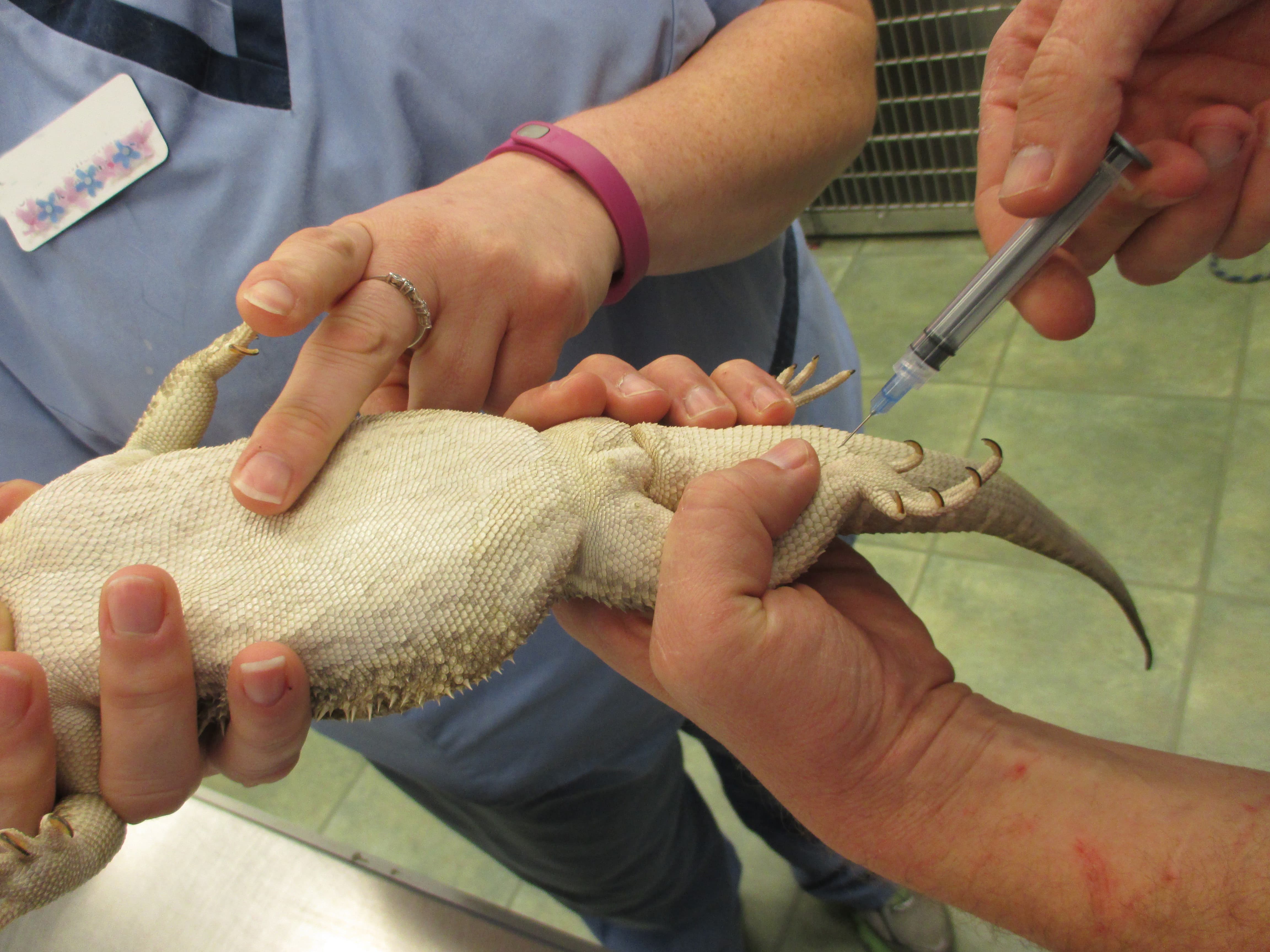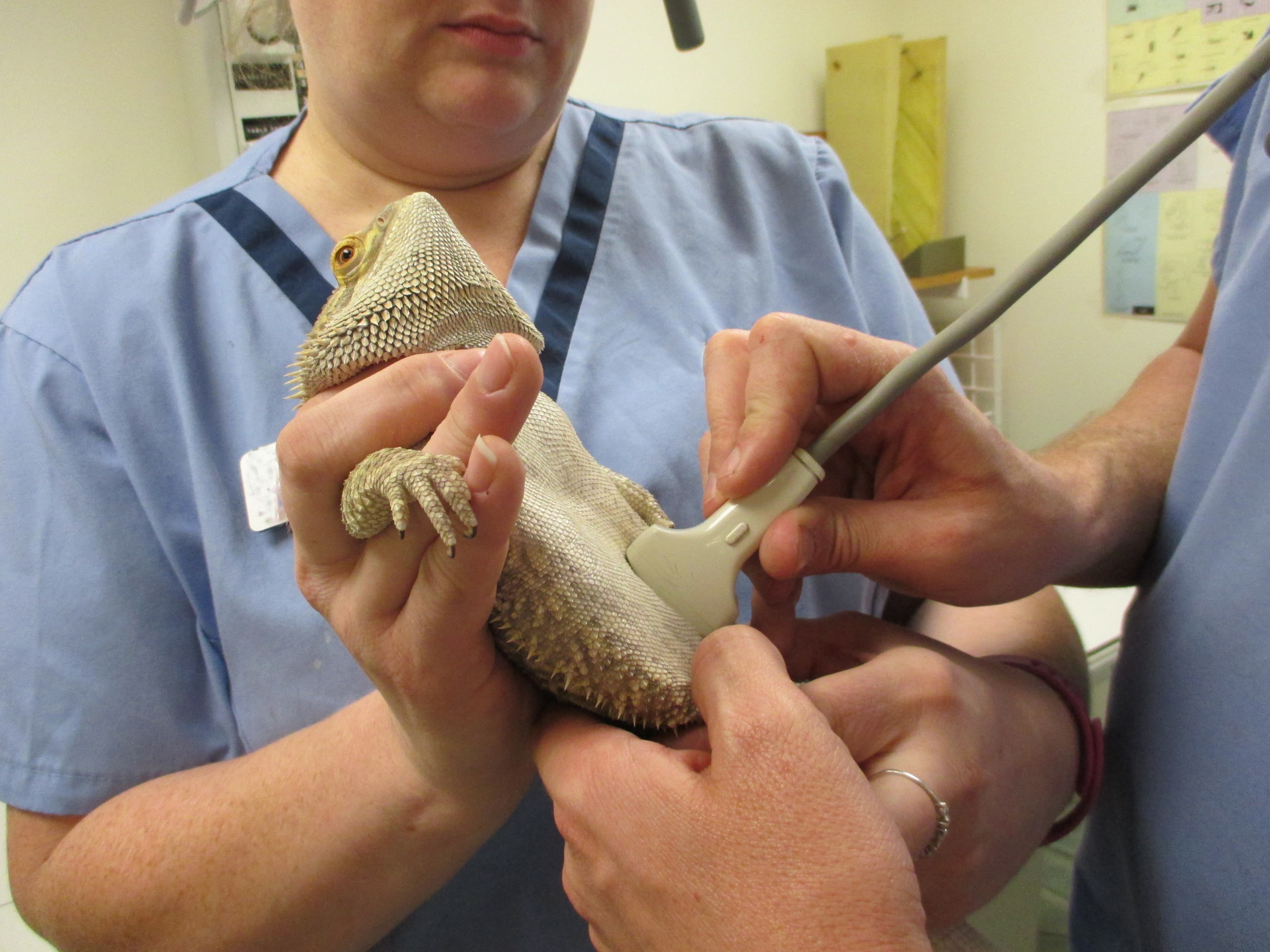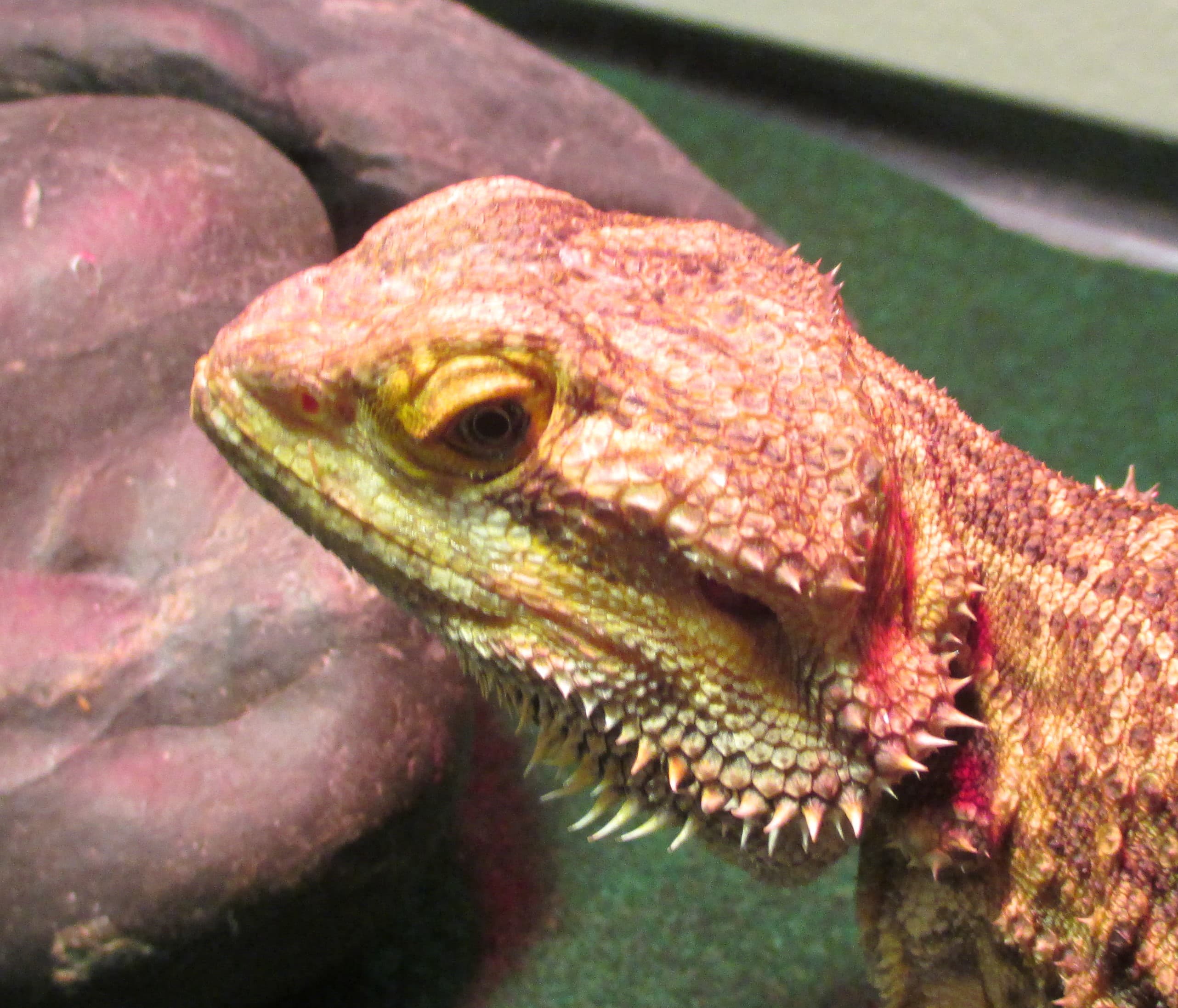How to evaluate a reptile chemistry panel
Defeat imposter syndrome and treat lethargic reptile patients with confidence
Content submitted by Moichor, a dvm360® Strategic Alliance Partner.
Let’s be honest. The most common thing that you hear in practice with your reptile patients is: “lethargic and not eating well.” Patients’ owners might add “I thought maybe he was brumating,” or even slip in a nice acronym like “I think she has an RI.” You start logically: discuss husbandry and nutrition, get a medical history, and perform a thorough physical examination. There are a few improvements that can be made in husbandry, but nothing major. The physical exam is unremarkable. The patient generously provides a fresh fecal sample on your lap, but a fecal saline direct and float are both normal.
Figure 1. Sampling blood from the ventral tail vein of a bearded dragon. Photo provided by Moichor

Lacking anything else to explain the lethargy, you start some supportive care with supplemental feeding and send out a reptile chemistry panel to an animal reference lab like Moichor. The only problem is that now you have to interpret the blood panel which is a challenge since you spent a whole semester on mammals in vet school but hardly anything on reptiles. Here comes the imposter syndrome, but don’t worry, because you’re going to learn how to evaluate a reptile chemistry panel by the time you’re done with this article.
What can you expect (and not expect) from the chemistry panel?
Although the specific analytes in the serum chemistry vary for reptiles, they give information similar to what you would get for other companion animals. You should be able to evaluate the kidneys, liver, GI tract, and draw some information on nutritional status and hydration. Learning to interpret the new tests is achievable.
Another important thing to remember is that when you were in veterinary school and learning about interpretation of cats, dogs, horses, or other animals, you were learning to compare a few breeds within a given species. In reptile practice, we will be talking about hundreds of different species of animals routinely seen in clinical practice, encompassing several different orders. That makes generalities difficult, so there are always exceptions to the rules.1
Evaluating the kidneys
A little background is helpful to understand evaluation of the reptile kidneys. Reptiles process nitrogenous waste through a different process than mammals. Thinking of the evolution of reptiles, conservation of water was very important for animals first making a permanent home on land. To help conserve water, nitrogenous waste is metabolized into uric acid. Although it requires more energy than producing urea, like mammals, the process allows almost all the water to be retained. With the exception of a few fully aquatic reptiles, some chelonians and crocodilians, levels of blood urea nitrogen (BUN) give little information about renal function.2 It may elevate with gastrointestinal bleeding, but there is no research data to fully support that.
In practicality, uric acid (UA) can be interpreted in a similar manner to BUN in mammals. With severe renal disease, you will see elevations of UA. However, like BUN, there can be significant loss of function before the blood reflects it with an elevation of UA. Serum chemistry values for UA can be elevated by renal damage, but like BUN, may also be elevated by dehydration and may transiently increase with a high protein meal.2 UA may be lower than normal in periods of hyporexia or fasting. Unlike BUN, UA is not documented to increase with gastrointestinal hemorrhage. However, articular and visceral gout are more common in reptiles than many of our mammal patients, so this should be an additional differential diagnosis for increased UA.2,3
Calcium to phosphorus ratio (Ca:P) is another important tool for evaluation of the reptile kidneys. For most reptiles, Ca:P is at least 2:1 in a normal, healthy individual. With renal disease, the ratio tends to decrease. As that ratio approaches 1:1 or becomes inverse, you should increase your concern for potential kidney damage. As kidneys lose function, they are less able to eliminate phosphorus, and lower calcium occurs secondary to Renal Secondary Hyperparathyroidism (RSHP). You may see this change earlier than an increase in UA.4
Hyponatremia and hyperkalemia may also be seen with renal disease, but they can be related to many other conditions.
Evaluating the liver
Sorry to be the bearer of bad news, but reptiles don’t have any documented convenient liver-specific analytes on chemistry panels. Alanine transaminase (ALT) is not a liver-specific enzyme in almost all tissues in reptiles.5,6 It’s not reported on most profiles, but it may be a source of diagnostic errors when reported and interpreted by inexperienced reptile practitioners.
The most reliable analytes for evaluation of the liver are aspartate aminotransferase (AST) and bile acids (BA). AST is elevated by liver damage, but it’s also present in numerous tissues, most notably in muscle tissue.2,5,6 You should always look at AST in conjunction with creatine kinase (CK). If both are elevated, then muscle damage could be the reason for the increase. The cause may be as simple as the restraint used for obtaining the blood sample. AST elevation in absence of CK elevation should raise your concern for liver pathology, but it could be an indicator of less acute muscle trauma as well. Be sure you get a thorough trauma history. Bile acids are an indicator of liver function or cholestasis in most species. In reptiles there is no need to separate pre-and post-prandial samples.
Figure 2. Ultrasound of the liver in a bearded dragon. Photo provided by Moichor.

You can also look at supporting analytes similar to what you would consider with other companion animals: cholesterol, proteins, triglycerides, and blood glucose. However, there is little research to completely support the changes. There is strong anecdotal support, but you shouldn’t change your mind based on the other analytes. If the blood panel raises concern for liver pathology, then ultrasound should be recommended to the client.
Evaluating the GI tract, nutritional status, and hydration
Additional analytes in the panel may be used in conjunction with others previously discussed to evaluate overall health. Albumin will be elevated by dehydration. Albumin and other proteins may be lowered with significant anorexia or malabsorption. Glucose, cholesterol, uric acid, and triglycerides can trend in the same manner, depending on the species.
There are a couple of important things to note here. First, this isn’t a diagnosis. Further diagnostic testing will be required to find the underlying cause that led to anorexia or malabsorption. Second, albumin values on the standard chemistry panels are obtained using the Bromcresol Green method, which isn’t fully reliable in most reptiles.7 If there’s an indication of abnormalities in the serum proteins, you should consider protein electrophoresis (EpH) to get more accurate values.
A few additional notes
The reference ranges for many species are extrapolated from studies involving few animals compared to dog, cat, or equine reference ranges. Trending is important, and that’s a good reason to recommend early wellness testing for patients.
Significant seasonal variations exist.
Severe hyperglycemia is correlated with gastric adenocarcinoma in bearded dragons. However, this should not be considered pathognomonic for the condition (REFER).
In addition to seasonal variations, reproductive status will affect the normal values. We may have a future article with more detail, but for the purpose of interpreting the serum chemistry panel, you should be aware that calcium (and some other analytes) will be elevated above reference ranges with normal reproductive activity in female reptiles.2 There may be no cause for alarm with elevated calcium, but the animal should be monitored to be sure the reproductive cycle proceeds normally. Likewise, a reproductively active female with calcium in the reference ranges may not be normal.
I remember learning that the job of a clinician may be to explain a normal diagnostic finding that results from two equal and opposing abnormal forces (shout out to Dr. Rance Sellon from Washington State University). A reptile with active follicles or eggs, but severe emaciation or malnutrition, may balance out with calcium inside the reference ranges.
Figure 3. Normal, healthy bearded dragon. Photo provided by Moichor.

Conclusion
We all have imposter syndrome at some point in our career. Reptile chemistry panels can be complicated and feed into that. Now that you have more confidence with interpretation of reptile chemistry panels, you can evaluate the findings for your lethargic patient, and you’ll know how to proceed with treatment and additional testing so that your lizard friend is back to normal.
References
- Wellehan J. Chapter 3: Clinical Aspects of Evolution in Reptile Medicine. In: Mader D and Divers S (editors), Current Therapy in Reptile Medicine and Surgery (2014). Elsevier.
- Heatley J and Russell K. Chapter 34: Clinical Chemistry. In: Divers S and Stahl S (editors), Mader’s Reptile and Amphibian Medicine and Surgery, 3rd edition (2019). Elsevier.
- Wilkinson S and Divers S. Clinical Management of Reptile Renal Disease. VCNA 23(1); 2020; p. 151-168.
- Miller H. Urinary diseases of reptiles: Pathophysiology and diagnosis. Seminars in Avian and Exotic Pet Medicine: 7(2); 1998, p. 93-103.
- Bogan J and Mitchell M. Characterizing Tissue Enzyme Activities in the American Alligator (Alligator mississippiensis). JHMS 24(3-4); 2014, p. 77-81.
- Mason A, Perry S, and Mitchell M. Plasma and tissue enzyme activities of banded water snakes (Nerodia fasciata) and diamondback water snakes (Nerodia rhombifer). AJVR 83(1); 2021, p. 5-14.
- Muller K and Brunnberg L. Determination of plasma albumin concentration in healthy and diseased turtles: a comparison of protein electrophoresis and the bromcresol green dye-binding method. VetClinPath 39(1); 2010, p. 79-82.
